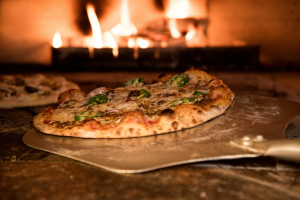Craving something beyond the usual? You’re not alone. Many food lovers are looking to explore new flavors, especially when it comes to international cuisine. Japanese dishes, in particular, continue to grow in popularity. But with so many choices, it can be hard to know where to begin or what’s currently trending. Whether you’re new to the cuisine or already a fan, finding the most talked-about meals today can feel overwhelming.
That’s where we come in. In this guide, we’ll walk you through the famous Japanese food everyone’s enjoying right now. From bold street eats to refined classics, these are the must-try dishes before the year wraps up. Let’s explore what makes them special and where you can enjoy them at their best.
Why Is Japanese Food So Popular Around the World?
There’s something universal about the appeal of Japanese cuisine. It’s not just about flavor, it’s about balance, mindfulness, and a respect for ingredients that have been passed down for centuries. Every dish is constructed with care, often using just a few simple elements brought together in perfect harmony. This approach allows the natural character of each ingredient to shine, whether it’s fresh fish, steamed rice, or a slow-simmered broth.
In 2025, that same philosophy continues to shape what diners are seeking. Across the globe, people are gravitating toward meals that are both nourishing and aesthetically pleasing. Japanese dishes meet this demand effortlessly, offering both health benefits and visual delight. From Tokyo to Dubai, the flavors of Japan remain in demand and more accessible than ever.
Japan’s Iconic Noodle and Rice Dishes
Japanese cuisine has always been closely tied to warmth and comfort. This is especially true when it comes to rice and noodle dishes, which remain central to everyday meals across Japan and beyond.
Hot dishes like udon noodles and soba are leading the trend. Udon, made from wheat flour, is known for its thick, chewy texture and is usually served hot in a clear broth that highlights the subtle flavors of ingredients like green onion, grilled chicken, or tofu. Soba, on the other hand, is crafted from buckwheat flour and can be enjoyed both cold with dipping sauce or warm in a light soy-based broth. These dishes are not only nourishing but also reflect Japanese cooking’s seasonal sensitivity light and cooling in summer, warming and hearty in winter.
Japanese rice remains at the heart of many meals. Rice bowls topped with grilled meats, vegetables, or miso-marinated tofu continue to be a favorite. Dishes like our grilled chicken rice bowl at APE are simple in construction but full of depth, featuring rice topped with sliced meat, seasoned vegetables, and sauces made from soy sauce or rice wine. The result is satisfying and wholesome, especially when paired with a bowl of miso soup an ever-present side in traditional Japanese meals.

Beyond Sushi: Elevated Staples and Regional Revival
Sushi continues to be one of the most recognizable faces of Japanese cuisine, but in 2025, we’re seeing renewed appreciation for its origins and evolving presentations. While the basic elements, vinegared rice, raw fish, and dried seaweed, remain the same, there’s a growing emphasis on seasonality and artistic arrangement. Chefs are focusing more on flavor balance and minimalism, treating each sushi piece like an art form rather than a trend.
At APE, our sushi reflects that balance, combining fresh raw fish with other ingredients like avocado, Japanese rice, and umami-rich sauces that are made from soy or rice wine. Every roll or nigiri captures both flavor and visual harmony.
Equally important are the side dishes that accompany or even replace sushi in a meal. Tempura, for example, has seen a creative revival. Traditionally a method of deep-frying vegetables or seafood in a light batter, today’s versions may include tofu, sweet potato, or even green beans, served with a dipping sauce and grated radish. The texture contrast between the crisp outer layer and the soft interior is key to its appeal.
And then there’s Japanese curry milder than its Indian counterpart, but rich and comforting. Served over rice or as a topping for a breaded cutlet, it’s an example of how Japanese food adapts foreign elements into dishes that feel completely native. Whether it’s curry, miso-glazed eggplant, or stir-fried noodles, this “everyday” food carries emotional and cultural significance.
Tradition Meets Ritual: Food as Culture and Craft
Japanese cuisine is not only about eating it’s about experiencing food in a way that honors the past. Many of the dishes we know today were introduced to Japan centuries ago and have been refined through generations of cooking and cultural exchange.
One of the most meaningful culinary traditions is the ichiju-sansai structure a meal made up of one soup, one main dish, and two sides. This format is still practiced today and can be seen in homes, Japanese restaurants, and even bento boxes. At the center of many such meals is miso soup. With roots in the Edo period, this humble soup, made from fermented soybean paste and often served with tofu, seaweed, or green onion, represents balance and subtlety in Japanese cooking.
Hot pot, or nabemono, also reflects this communal and seasonal spirit. Whether it’s sukiyaki or shabu-shabu, the act of cooking sliced meat, cabbage, and other vegetables at the table in simmering broth speaks to a deep cultural value of shared meals and seasonal awareness. These meals are more than food they’re experiences.
In 2025, there’s renewed interest in the tea ceremony and its influence on Japanese food culture. It’s not just about the tea itself but the accompanying sweets made from red bean paste or rice flour, and the quiet, deliberate movements that elevate food preparation into a meditative act.

APE’s Take on Japanese Favorites
At APE, we bring this reverence for Japanese tradition to every dish we serve, while also welcoming modern interpretations that speak to Dubai’s diverse, global diners. Our kitchen focuses on clean flavors, high-quality ingredients, and presentation that reflects Japanese style.
Some of our must-try dishes include:
- Udon Noodle Soup – Thick noodles in a warming broth, served with seasonal vegetables and your choice of protein.
- Grilled Chicken Rice Bowl – A simple yet satisfying combination of tender chicken, white rice, and a rich soy-based glaze.
- Miso Soup – Classic and comforting, made fresh daily to accompany your meal.
- Tempura Selection – Crispy deep-fried vegetables and seafood, paired with a delicate dipping sauce.
- Sushi Platter – A beautiful assortment of nigiri and rolls, crafted with precision and care.
Each of these dishes reflects a different side of Japanese cooking, from the hearty and rustic to the delicate and refined. Whether you’re here for lunch, a quiet evening, or a memorable date night, our menu is designed to offer a thoughtful taste of Japan’s most beloved dishes.
Famous Japanese food isn’t just about taste—it’s about the care in preparation, the intention in presentation, and the atmosphere in which it’s enjoyed. At APE, we go beyond simply serving a meal. Every dish is a reflection of our commitment to tradition and our love for refined, flavorful dining. If you’re looking for something more than the usual fast food experience—something that honors the depth and elegance of Japanese cuisine—then we welcome you to join us.
Whether you’re spending the afternoon in our tranquil garden with waterfall views, enjoying drinks and shisha in the lounge, or dining indoors in a space designed for comfort and sophistication, every corner of APE is built to make your time memorable. From quiet moments to special occasions, lunch meetings to late-night cravings, our doors are open daily from 12:00 PM to 4:00 AM.
To reserve your table, reach out to us at hello@ape.ae or call +971 50 750 7483. You’ll find us along Jumeirah Beach Rd in Umm Suqeim, Jumeirah 3—right in the heart of Dubai’s dining scene.
Frequently Asked Questions
What is the most popular Japanese food in 2025?
Is Japanese food always served hot?
Are Japanese rice bowls healthy?
Yes, most rice bowls use balanced ingredients like lean meats, vegetables, and sauces low in fat, making them a satisfying yet wholesome meal.








